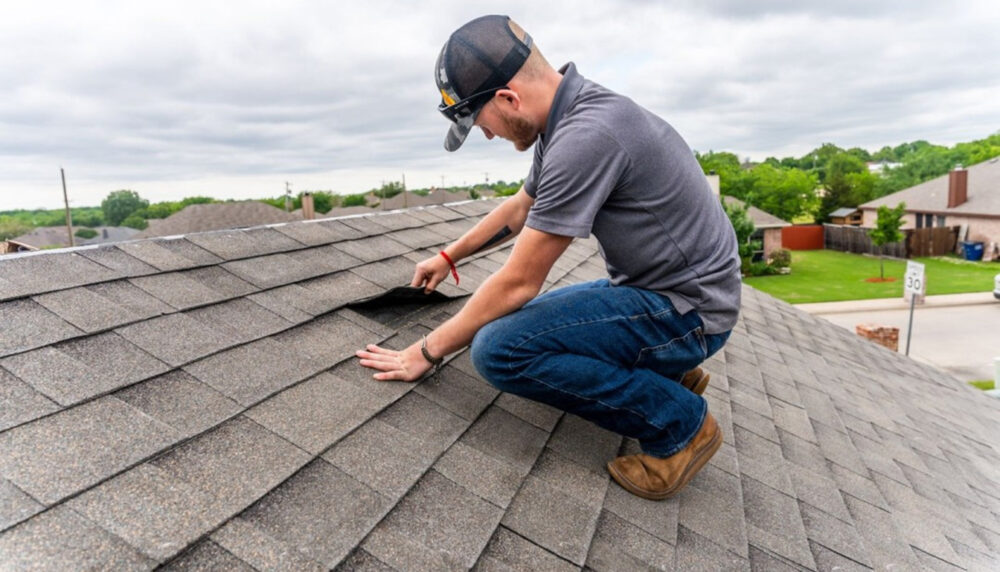A roof is one of the most important protective layers of your home — yet many homeowners are unsure how long their roof should last. Different roofing materials offer very different lifespans, and factors such as weather, installation quality, and maintenance all play major roles in how long a roof truly endures.
Understanding this helps you make smarter investment decisions, prepare for future replacements, and extend the life of the roof you already have.
Below is a clear breakdown of the most common roofing materials and how long each typically lasts.
Asphalt Shingles: A Popular, Affordable Choice
Estimated Lifespan: 20–30 years
Asphalt shingles remain one of the most widely used roofing materials because they’re affordable, easy to install, and readily available.
Basic 3-tab shingles usually last around 20 years, while architectural shingles can push closer to 30 with good installation and care.
What affects asphalt shingle lifespan?
- UV exposure causing gradual surface wear
- Heavy rain leading to cracks and curling
- High winds lifting or loosening shingles
- Poor attic ventilation trapping heat and moisture
These shingles perform best in mild-to-moderate climates and benefit greatly from regular inspections.
Metal Roofing: Strong, Efficient, and Long-Lasting
Estimated Lifespan: 40–70+ years
Metal roofing is known for exceptional durability and weather resistance. It’s especially popular in areas that experience heavy storms or strong coastal winds.
- Steel roofs last about 40–50 years
- Aluminium can reach 50+ years
- Copper and zinc can exceed 70 years
Key advantages
- Highly resistant to wind, fire, and mildew
- Sheds rain and snow efficiently
- Reflects heat, improving energy efficiency
- Low maintenance compared to most roofing materials
While metal roofing has a higher upfront cost, the long lifespan and reduced repair needs make it an excellent long-term investment.
Clay & Concrete Tiles: Extremely Durable in Warm Climates
Estimated Lifespan: 50–100+ years
Clay and concrete tiles are among the longest-lasting roofing materials available. Many homes with these tiles remain in great condition for decades or even over a century.
Why they last so long
- Resistant to rot, insects, and decay
- Perform extremely well in hot, sunny environments
- Maintain colour and appearance for many years
Things to keep in mind
- Very heavy — roofs must have proper support
- Not ideal for frequent freeze–thaw climates
- Require careful installation to prevent cracking
Minimal maintenance such as cleaning off debris and checking for shifted tiles can help extend their already impressive lifespan.
Slate Roofing: Premium Strength and Timeless Appearance
Estimated Lifespan: 75–150+ years
Slate is one of the strongest and most beautiful roofing materials in the world. Many historic buildings still have their original slate roofs due to the stone’s exceptional longevity.
Benefits
- Natural stone with unmatched durability
- Fire-resistant
- Low-maintenance
- Visually striking with unique colour variations
Slate is heavy and requires specialist installation, which raises the cost — but no other roofing material comes close to its lifespan.
Wood Shakes & Shingles: Natural Beauty With Extra Care Required
Estimated Lifespan: 20–40 years
Wood roofing materials like cedar and redwood give homes a warm, rustic appearance. However, they need more maintenance than other roofs.
Pros
- Excellent natural insulation
- Eco-friendly
- Attractive and unique aesthetic
Cons
- Vulnerable to moisture, mould, and rot
- Can attract insects if not treated properly
- Requires periodic cleaning and sealing
Proper ventilation and regular inspections can help wood roofs reach the higher end of their lifespan range.
How to Extend the Life of Any Roof
No matter what type of roof you have, good maintenance makes a major difference.
1. Inspect the roof twice a year
Look for cracked shingles, loose tiles, water stains, and moss buildup.
2. Keep gutters clear
Blocked gutters force water back under the roofline, leading to rot.
3. Trim overhanging branches
Tree limbs scratch surfaces, dislodge tiles, and drop debris.
4. Ensure proper attic ventilation
This prevents heat and moisture from weakening roofing materials.
5. Clean gently — avoid pressure washing
High pressure strips protective layers and shortens roof life.
6. Remove moss and algae properly
These trap moisture and accelerate deterioration.
7. Use sealants and coatings where appropriate
These help protect against UV rays and moisture (always consult a professional first).
8. Fix small problems quickly
A single loose shingle can lead to major leaks if ignored.
Proper maintenance gives every roofing material a longer, healthier lifespan.
Final Thoughts
Choosing the right roofing material and maintaining it properly can save you thousands in repair or replacement costs over the years. Whether your home uses asphalt shingles, metal panels, tile, slate, or wood, consistent care ensures long-term protection and performance.
These actions give you confidence in your roof’s condition. Plus, they reduce replacement needs. Always seek professionals for complex repairs. In the end, proper care extends the lifespan of different roofing materials and keeps your home protected year-round.






